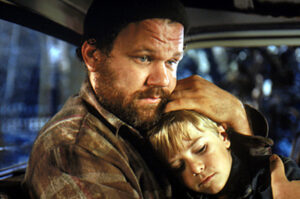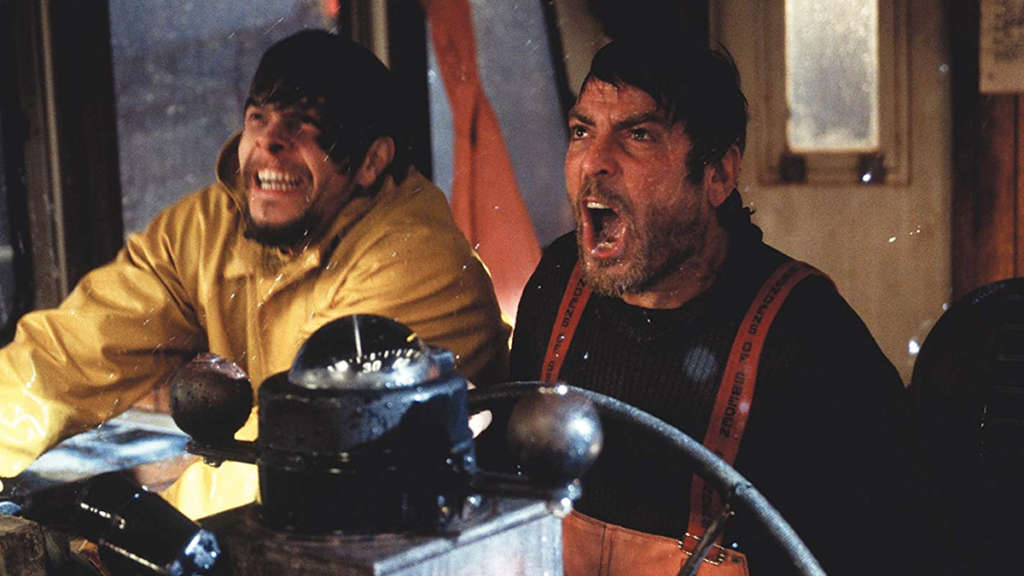There seem to be endless stream of disaster movies. From “The Day After Tomorrow” to “Contagion,” it’s almost as if audiences sit down for one every year. For the most part, it’s become trickier for these films to resonate with audiences. Once you’ve seen a few, it’s like you’ve seen them all. Only so many outbreaks can be blockbusters.
So how does “The Perfect Storm” compare? Take a look at how this 2000 flick barely missed the mark.
The Issue With Biographical Dramas
“The Perfect Storm” recounts a true story. In October 1991, Massachusetts-based fishing boat “Andrea Gail” was lost at sea alongside its six-man crew. The crew had intended to sail through a nor’easter to return home before their catch spoiled. This mistake proved fatal, as they severely underestimated the storm’s power. Author Sebastian Junger wrote a book about these events—and then came “The Perfect Storm.”
It’s true that many biological dramas have come out to acclaim from critics and audiences alike. In fact, it’s safe to say that several biopics have received decent praise. But it isn’t easy to tell someone else’s tale accurately when you have to keep viewers engaged at the same time. There are many factors that contribute to a perfect biopic—and it’s an uphill battle for most writers and directors to achieve a “good” film.
Beyond that, it’s also impossible to ignore the movie’s exaggerated effects. “The Perfect Storm” sorely ignores the fact that such a tale demands some realism.”
In “The Perfect Storm,” it’s clear that Wolfgang Peterson decided to focus on visual and sound effects over story. Junger’s book details life as a sailor, as he pores over the various implications and considerations that these men and women face. Unfortunately, “The Perfect Storm” chooses to emit exactly what this story needs to resonate with critics and audiences.
It’s difficult to care about and connect with characters when you don’t move beyond sheer tragedy. It isn’t easy to feel invested when the movie hasn’t said much at all. The reason biographical dramas sometimes fail lies with their message. Did they tell a narrative—or did they lead to a deeper, overall message?
It’s a True Story, But Not Completely

The film aligns with various historical accuracies. That’s mostly because it identifies itself as “based on a true story,” so it’s easier to avoid comparisons with real life.
You don’t learn much about smaller details that make a difference to audiences, like how “Andrea Gail” received her ship name. Every boat needs a special name, right? Even amateur skippers—like some of you reading—want to name their ship something special.
Beyond that, it’s also impossible to ignore the movie’s exaggerated effects. “The Perfect Storm” sorely ignores the fact that such a tale demands some realism. Its animated waves don’t exactly convey the intense devastation that you’d feel as you watched a hurricane capsize a boat. You could say that most disaster movies have to play around with CGI and green screens — but then again, “The Perfect Storm” involves real events.
Aren’t you supposed to believe that you’ve just witnessed someone drown? It’s often necessary for directors to make a spectacle. In this case, it’s a bit too overboard—especially when you consider that “Andrea Gail” likely capsized much more quickly than the film depicts. If the movie had focused on stories and relationships around the characters, it would’ve been able to do far less more effectively.
The Cast Comes to the Rescue

The film’s cast makes up for its other faults. George Clooney and Mark Wahlberg star alongside John C. Reilly, William Fichtner, Allen Payne, and John Hawkes as “Andrea Gail” crew members. Other notable actors include Mary Elizabeth Mastrantonio and Diane Lane. These performances aren’t exactly Oscar-worthy, but they’re good enough to somewhat distract from boisterous visuals.
Sure, no one’s ever said that “The Perfect Storm” was Clooney’s best performance—especially when he released “O Brother Where Art Thou” a few months later. But if Peterson had used lesser-known actors for the same exact project, it would’ve been a snoozefest. At least audiences have the option to watch a few stellar actors take the screen for two hours.
If “The Perfect Storm” had allowed these actors to play more meaningful characters, it’d be far easier to have something to say about it. Even though some critics seem to think that the film’s special effects are indeed sophisticated, it’s impossible to enjoy a story if there isn’t one.
“The Perfect Storm” Lacks Reality — and Heart
Nearly 20 years later, it’s still tough to watch a film that lacks a heart. You can incorporate endless visual and audio effects, but those human connections make audiences care. While “The Perfect Storm” may be fun to revisit on a Sunday afternoon, it’s not the greatest disaster flick you’ll ever see. And maybe that’s okay.

